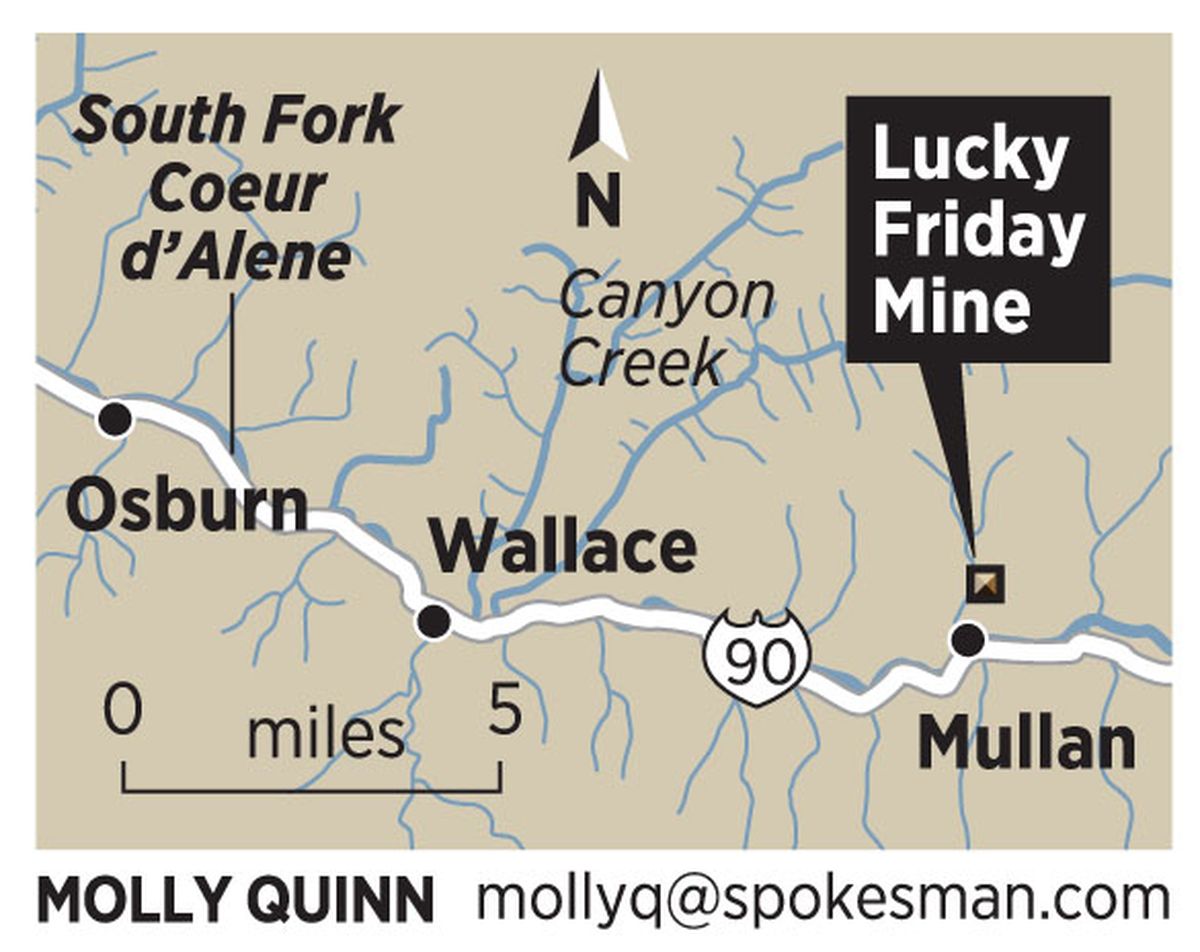Mine efforts continue
Workers say trapped man equipped to survive

MULLAN, Idaho – Longtime Silver Valley miners said if Larry “Pete” Marek survived the Friday night rockfall that trapped him 6,150 feet underground, his hydraulic drill could supply him with the air and water he needs to keep him alive.
Hecla Mining Co. officials said that Marek, 53, was working in a 152-foot-long tunnel at the Lucky Friday Mine and that the rockfall occurred 75 feet from the entrance. That leaves 77 feet that might be partly or wholly filled with rock; no one knows at this point.
Hecla said the pile of rock, some of it huge boulders that must be broken up before they can be moved, is 25 feet high and 20 feet wide. Rescue teams and federal safety officials working around the clock have advanced through 39 feet of that rock, a company news release said Monday. The teams are now progressing at a rate of about two feet every 12 hours.
“The ground that failed is so compressed and compacted that it’s not allowing us to free dig, as one would say,” said Kevin Hirsch, assistant district manager of the federal Mine Safety and Health Administration’s western district.
Throughout the Silver Valley, miners and residents monitoring the situation are hoping and praying that Marek found refuge in a pocket beyond the rockfall and was not buried. There has been no communication with the miner since the collapse Friday evening.
Rescuers have tried to force compressed air through the pile of rock for Marek.
Separately, crews were preparing Monday evening to use a diamond drill to bore through 185 feet of rock from a different position in the mine to penetrate the tunnel, called a stope, Hirsch said. The small-diameter hole could be used to deliver air and also help rescuers determine if the rockfall stopped short of plugging the length of the stope.
“I’m just hoping there was a void back where he was at. We’re hoping he was at the very end of the tunnel and that the roof didn’t cave in on him,” said Don Capparelli, who supervised Marek for several years in the late 1990s at the Sunshine Mine. Capparelli, who lives in Page, Idaho, near Smelterville, retired after 34 years in mining.
If Marek survived, miners say, he might have water and air supplied through the hoses attached to his hydraulic drill. Miners are trained to detach the hoses to access the water and air in situations like this, they say. However, it’s also possible the hoses attached to the drill were cut or crushed by falling rock.
Capparelli described Marek as strong and said he was the most skilled miner on his crew when they worked together.
“He looks like he is cut out of a piece of steel,” said Capparelli, 62. “He is in tremendous physical condition.”
Miners also estimated the temperature that deep in the ground at between 100 and 130 degrees.
“The deeper you get, the hotter it gets,” said Hank Jefferson of Wallace, who worked for the Galena mine for 27 1/2 years and also has been underground in the Lucky Friday as a contractor. Jefferson said Marek was likely to have a self-rescue pack that removes carbon monoxide from the air.
Rescue crews began using a remote-controlled mucker to remove rock and debris from the cave-in. The machine was whisked to the Lucky Friday on Saturday from the Stillwater Mine in Montana.
The mucker was taken apart, lowered down the shaft and then reassembled.
A second, larger mucker owned by a contractor working at the mine was being fitted with electronic components that would allow it to be operated by remote control, said Melanie Hennessey, Hecla’s vice president of investor relations.
Hecla flew in an electronics expert from the East Coast to help convert that machine to remote control.
Workers were hoping to have it ready sometime Monday night.
Capparelli said he was buried for several hours following a 1994 rockfall at the Sunshine that claimed his partner’s life. He said though he escaped without a broken bone, “there’s absolutely nothing you can do. You have absolutely no control over the outcome.”
While he was buried, Capparelli said, he just prayed.
“I just asked the Lord not to let me die,” he said. “That is your option.”
Hecla has a solid safety record at the Lucky Friday, one of the deepest hard-rock mines in North America, according to regulators. Company employees, who are members of the United Steelworkers of America, concur.
Public records on file with the Mine Safety and Health Administration during the past 11 years show no fatalities. The database reveals dozens of violations from inspections over that span, but none during the past year that would be related to the kind of accident that happened Friday.
Hecla agreed two years ago to pay $177,500 in fines for violating federal clean water laws at the Lucky Friday. The Environmental Protection Agency said that the mine exceeded discharge levels for metals such as lead, zinc, cadmium and suspended solids between September 2008 and February 2009. The mine’s discharge flows into the South Fork of the Coeur d’Alene River above Mullan. Hecla is spending $2.3 million to upgrade its wastewater system at the Lucky Friday.
Last year the mine announced a $200 million plan to drill deeper in pursuit of richer veins of silver that will extend the mine’s life at least another 19 years.
Based in Coeur d’Alene, Hecla is one of the older silver mining companies in the United States.
Its mining legacy in the Silver Valley also includes environmental cleanup costs. Two months ago Hecla agreed to a $263 million settlement with the federal government, Coeur d’Alene Tribe and the state of Idaho to resolve its role in turning the Coeur d’Alene basin into a Superfund site.